Media Library
Documentary, graphic and/or audiovisual knowledge objects are offered here, offering information on various sectors and topics. Use the keyword search or search filters to access current audiovisual and documentary knowledge objects useful for your implementation.
If you have any questions or suggestions, please contact us here.

Guide to groundcovers in citrus trees
One of the fundamental objectives of sustainable production systems must be the control of water erosion of the soil, which requires appropriate soil management and conservation techniques.

Characterization of Functional Compounds in Different Strawberry Varieties
Several studies have shown that these varieties differ in the quantity and type of antioxidants. Given this multivarietal nature, it is interesting to know the antioxidant levels of the varieties grown each season. In fact, these antioxidants can vary depending on the phenological stage of the crop and the weather conditions during the season, which runs from autumn to late spring.

Red Fruit Irrigation Programming Manual
A detailed review of irrigation scheduling for soft fruit crops in the province of Huelva, using weather forecasts, is presented. The scheduling is based on the FAO methodology for calculating crop water requirements. The procedure for calculating greenhouse ETo is described, and specific Kc values for soft fruit crops in the province of Huelva are proposed.

Ten years of applying alperujo compost in olive groves
The results of a ten-year study are presented, during which different mixtures of olive oil compost were applied to olive groves. The influence on the improvement of soil fertility and fruit oil yield was evaluated.
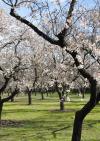
Biohealthy Compounds of Pistachio
The results of a study of 11 pistachio varieties grown in Andalusia during the 2019 and 2020 seasons are presented, assessing their total phenolic compound content, antioxidant activity, carotenoid content, and chlorophyll content. The color of the shell, the integument, and the interior of the fruit are also studied.

Progress of Productive and Quality Results of Strawberry Fruit in Conventional Cultivation obtained until December 31, 2015
Production data for the ten varieties under study are shown, obtained in the three conventional cultivation locations where the trials are carried out, up to February 28 and March 31 of this year 2015. In addition, data on organoleptic quality, firmness and soluble solids content, up to March 31, are expressed as the average of the three samplings carried out up to that point.

Impact of Climate Change on Wheat Cultivation in Andalusia
According to forecasts, southern Europe will be significantly affected by a change in climatic conditions, and therefore, Andalusian agricultural systems may be severely affected. Thus, rising temperatures and decreasing rainfall will be the most visible effects and could have a negative impact on wheat cultivation.

Greenhouse Horticultural Crops: Importance of Hygiene and Prophylaxis
Following the Delphi method, a panel of experts was established and consulted on the hygiene status of greenhouse horticultural crops, with a special focus on problems arising from inputs and crop management.

Sinapis flexuosa, a mustard with high glucosinolate content and an alternative to Sinapis alba for biofumigation.
Sinapis flexuosa is a native cruciferous mustard species found in southeastern Spain, in the provinces of Almería, Murcia, and Jaén, and occasionally naturalized in other provinces further north (Barcelona, Coruña, and Pontevedra).
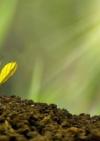
Sustainable Agro-environmental Crop Systems
Sustainable Agroindustrial Crop Systems is included in Submeasure 10.1. Payments for Agricultural and Environmental Commitments. This means that the beneficiary of this aid will receive financial compensation for carrying out a series of agricultural practices that are beneficial not only to the environment but also to the crops themselves.

Basic Manual of Oenological Laboratory
Both large wineries and cooperatives have highly qualified personnel dedicated to the chemical oenological control of grapes, must, and wine. However, in small, family-run wineries and presses, this specialization is not as common.

Evaluation of the effect of commercial foliar fertilizers on the control of leaf spot in organic olive groves of the Picual variety
Traditionally, control of olive leaf spot, one of the most serious diseases of olive groves caused by the fungus Fusicladium oleagineum, has relied on the inefficient use of foliar fungicides, especially copper compounds. The environmental damage caused by these practices has led governments to restrict their use.

Berry Irrigation. A tool for scheduling berry irrigation. User's guide.
Riego Berry is a mobile application from IFAPA (the Regional Government of Andalusia's Agricultural Development Agency) that allows for quick and intuitive irrigation recommendations for strawberry, raspberry, and blueberry crops in the province of Huelva.

Analysis of the production costs of small traditional no-till olive farms
The production costs of small olive farms are analyzed to demonstrate the importance of family labor in their profitability and to highlight the importance of CAP subsidies. In addition, innovative production strategies are proposed that would reduce production costs and thus increase profitability.
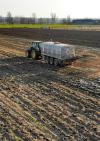
Opportunities for Legumes under the New CAP (2014-2020)
The importance of legumes in agriculture and the role these crops play in light of the new reform of the Common Agricultural Policy are described. The document focuses on the difficulties of weed control in legumes and the most relevant aspects of cultivating broad beans and chickpeas, the main legumes grown in Andalusia.

Green roof installation methods: fundamentals, applications, and management
The fundamentals of competition and interference between plant species are described. The first few weeks are crucial. Strategies for planting cover crops, planting timing, seed conditioning, and management have been outlined.

Oenological Potential of the Native Andalusian Varieties Beba and Mantúo de Pilas
The winemaking potential of two native Andalusian grape varieties, Beba and Mantúo de Pilas, is being evaluated. The study was conducted in Jerez de la Frontera over four consecutive seasons. Palomino Fino was also included as a reference variety, as it is the most widely cultivated variety in Jerez (95%).

Thermography for the Diagnosis of Mastitis in Dairy Goats
The results of an experimental trial within the scope of the Transforma Project PR.TRA23.TRA2023.002 (SOSDEGAN) Innovations for the Sustainable Management of Pasture and Livestock Resources in Dehesas and Semi-Extensive Systems in Andalusia, in the livestock module, are presented.
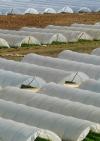
Citrus Irrigation App Installation and User Guide
This digital tool is designed to schedule and optimize irrigation for citrus crops using soil water balance, considering meteorological, soil, and plantation data.
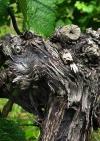
Agronomic Performance of Clementina de Nules on Different Citrus Rootstocks in Málaga. 2013/14 and 2014/15 Crop Seasons.
Results of a study evaluating the agronomic performance of conventional and new hybrid (semi-dwarf) rootstocks, carried out during the 2013/14 and 2014/15 campaigns under the agroclimatic conditions of the coastal area of the province of Malaga, with the aim of obtaining consistent information to optimize the agronomic management of plantations and thus their profitability.



